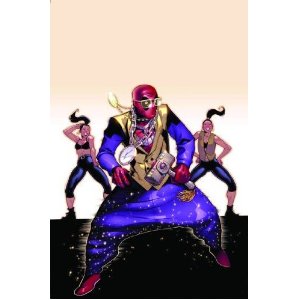I recently bought the video game Batman: Arkham City and was amazed by the content. Batman: Arkham City involves Gotham City being taken over by the villains that Batman has sent to Arkham Asylum throughout the years. The Batman villains have taken some of the residents of Gotham City hostage and some of the Gotham City Police officers hostage.
Batman: Arkham City begins with a segment where Bruce Wayne is making a speech. While he is speaking, Vikki Vale is shown reporting on the speech. In the middle of Bruce Wayne’s speech, he is kidnapped by Hugo Strange’s henchmen. Bruce Wayne is then taken to a room and tied up in a chair. Then Hugo Strange begins to talk smack to Bruce Wayne. From there the game starts. When the game starts, you have to use your XBOX controller to get Bruce Wayne to escape from captivity in the chair. The screen will give you hints on what buttons to push in order get Bruce to rock back and forth in the chair. Rocking back and forth will get Bruce to fall and break the chair, thus escaping from captivity. Once you get him to break out of the chair, Hugo Strange’s henchmen will start running in the room to give Bruce Wayne the beatdown. It will be your job to fight off the henchmen. Once you defeat the henchmen, you will have to find the rocket that Alfred will send to Bruce. This rocket will have the Batman suit in it for Bruce to change into. From there, you will be able to put Batman into some serious action.
What makes Batman: Arkham City so great is the fact that players of the game can choose to go anywhere they want. Players can choose the outcome of the game by going anywhere in Arkham City. Wherever you go in Arkham City will depend on what happens.
Each villain has their own section in Arkham City that that villain owns. Each villain’s territory is guarded by their henchmen. When you are far away from a villain, you will encounter thugs that have bats. The thugs with baseball bats are easier to defeat. However, if you get close to a villain, you will encounter henchmen with guns. The thugs with guns are a lot more difficult to defeat. You will have to use more of a strategy to take down thugs with guns by using smoke pellets. Once you get Batman to use the smoke pellets, you can get Batman to hide in the smoke and capture the thugs one by one. Doing this takes a long time to do because Batman will have to use his harpoon to hang from the top of buildings and swoop down on the gun armed thugs. You have to wait until the right time to get each thug.
The thing that really makes Batman: Arkham City stand out is the fresh new takes on the Batman characters. Batman: Arkham City does a good job at mixing elements from the Batman comics and all of the Batman movies.
In Batman: Arkham City, The Joker is supposed to be dying from a fatal illness. As Batman runs through Gotham City, you will overhear people talking about The Joker dying. There are also parts in the game where you can see the Joker’s sickly looking face. Just like in the cartoon Batman: The Animated Series, The Joker is voiced by Mark Hamil from Star Wars. Also, Kevin Conroy, who voiced Batman in Batman: The Animated Series, also voices Batman in the Batman: Arkham City video game.
The interesting thing about The Riddler’s voice is that it sounds just like Jim Carrey in the movie Batman Forever. However, The Riddler is voiced by Wally Wingert, who did work on the cartoons Family Guy and The Avengers: Earth’s Mightiest Heroes.
The Penguin is a villain that had a very good makeover in this video game. In this game, the Penguin has an English accent. This works considering The Penguin’s proper look. Another makeover for The Penguin a change in his monocle. Instead of a monocle on The Penguin’s eye, he has a piece of a broken beer bottle lodged in his eye. Other characters featured in Batman: Arkham City are Barbara Gordon, Harley Quinn, and Bane.
If you lose at a certain level, you will hear some very harsh words from the villain who owns the territory you where in when you lost. This will definitely motivate you to play the game over again.
All of the different elements taken from everything related to Batman makes Batman: Arkham City a great buy. The game will have you playing for hours with riddles that you will not want to stop trying to figure out.
 Remember rapper MC Hammer? He was the rapper who always said, “It’s hammer time!” This catchphrase resurfaced in Marvel Comics’ Deadpool story arc of “Fear Itself.” “Fear Itself” was a big event that included many different books that feature various Marvel superheroes. The basis of each story deals with magical Thor-like hammers that fall to the sky and endow different Marvel characters with powers. These stories are also an analysis of current events that have brought fear to America. One of the “Fear Itself” stories that stood out for me was “Fear Itself: Deadpool.” This story arc was funny and action-packed.
Remember rapper MC Hammer? He was the rapper who always said, “It’s hammer time!” This catchphrase resurfaced in Marvel Comics’ Deadpool story arc of “Fear Itself.” “Fear Itself” was a big event that included many different books that feature various Marvel superheroes. The basis of each story deals with magical Thor-like hammers that fall to the sky and endow different Marvel characters with powers. These stories are also an analysis of current events that have brought fear to America. One of the “Fear Itself” stories that stood out for me was “Fear Itself: Deadpool.” This story arc was funny and action-packed.






